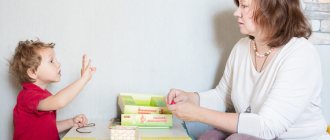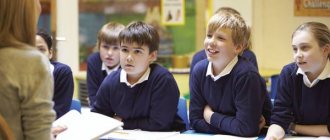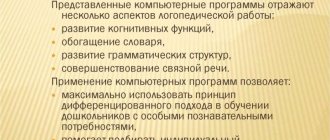Often, children with speech disorders have deficiencies in the condition of the muscles, both directly involved in the functioning of the speech-motor apparatus, and the muscles of gross and fine motor skills. There is an effective remedy for stimulating kinesthetics and normalizing muscle tone. Self-massage is such a means of correcting speech deficiencies .
What is self-massage?
Self-massage is a combination of stroking, rubbing, kneading and vibrations that a person performs on the surface of his body. Self-massage in speech therapy practice is divided into 3 types: general (self-massage of the head, neck, torso), articulatory (self-massage of the lips, cheeks and tongue) and finger massage.
Any self-massage cannot do any harm, and its benefits are obvious. It trains blood vessels and promotes better oxygen supply to internal organs. By doing self-massage, a child strengthens the muscles of the hands and fingers, relieves muscle tension, and kneads one or another part of the body or face.
Another advantage of self-massage is its accessibility: you don’t have to go anywhere and change your routine, and you can do it at any convenient time.
Regular self-massage and adult supervision over its correct implementation are important.
Complex 1. From 1.5 to 3 months. Balancing the tension
At this age, massage helps, first of all, to balance the tension in the extensor and flexor muscles of the legs and arms.
- Hand massage: smooth strokes (6 – 8 times).
- Raising from a supine position.
- Foot massage: stroking (6 – 8 times).
- Transferring to the stomach (15 – 20 seconds).
- Back massage: stroking (4 – 5 times).
- Spinal extension (2 – 3 times on each side).
- Abdominal massage: circular stroking (5 – 6 times); counter strokes (5 – 6 times); stroking the oblique abdominal muscles (5 – 6 times); circular stroking (5 – 6 times).
- Exercise to strengthen all abdominal muscles (2 – 3 times).
- Foot massage: stroking (5 – 6 times).
- Reflex extension and flexion of the feet (3 – 4 times).
- Reflex exercise “crawling” (2 – 3 times). Circular chest massage: vibration and stroking (5 – 6 times).
- Reflex exercise “walking” (2 – 3 times). Shaking hands.
- Rocking in the “fetal position” (2 – 3 times in each direction).
- Swinging on a ball.
Observe your child during massage and gymnastics. Surely you will notice that he already has favorite techniques and exercises that give him positive emotions. Next time you can start with them, this will immediately create a positive mood in the baby.
Self-massage techniques
When performing self-massage, a number of techniques are used: stroking, rubbing, pressing, pinching, passive movements, flexion, extension of the fingers.
The simplest and most important technique of self-massage is stroking. Calming effect on the nervous system. Improves muscle and gland function. In restorative self-massage, this technique is performed for increased nervous excitability, and in therapeutic self-massage, for spasms, injuries, etc. Stroking can be linear or circular.
Kneading is a self-massage technique that massages muscles. Under the influence of kneading, the speed of blood flow significantly improves, which contributes to the rapid restoration of mental and physical performance.
A special massage technique is rubbing. It differs from other techniques in its more energetic execution in various directions. Rubbing can be: - straight, zigzag, spiral and circular rubbing with the pads of one or more fingers and the tubercles of the thumbs; - straight rubbing with forceps; - straight rubbing with the base of the palm; - comb-like rubbing with fingers clenched into a fist. During rubbing, local blood circulation improves, tissues warm up, the resorption of hardening accelerates, muscle plasticity increases and performance increases.
Passive movements are performed only after kneading the muscles and rubbing the joints. Usually passive movements are performed with outside help.
Children are first introduced to self-massage techniques in speech therapy classes. You can teach children self-massage techniques from 2-2.5 years old. The training takes place in a playful way; children are asked to imitate various animals or objects (for example, a monkey). If desired, any parent can teach their baby to perform self-massage.
III. Features of logomassage for children at home
Where to get a massage, at home or in a clinic? Choose a place where your child will feel more comfortable. Some children go through the procedure better, find themselves in new conditions - they calm down and succumb to the doctor’s hypnosis. Other children love the familiarity of home, but behave restlessly in the clinic. Of course, the mother should be next to the baby to relieve his anxiety.
Logomassage is best done in a ventilated room. If you are going to massage your child’s mouth, make sure you wear gloves and a protective mask. All spoons, probes and other instruments used must be thoroughly washed and doused with boiling water.
Before the procedure, hands should be treated with a solution containing alcohol.
The child should feel well during the procedure, so it should not be done before bed or immediately after eating. Sessions don't have to be long.
Place your baby on the bed and place a pillow under his head or sit him in a chair. The main thing is that the child relaxes and nothing prevents him from breathing freely. A few words of encouragement wouldn't hurt.
Session duration depending on age:
- children under 2-3 years old – up to 8-10 minutes;
- preschool children – up to 17-20 minutes;
- from 7 years – up to 26-30 min.
Sessions can be repeated no more than three times a week. A sufficient course may include from 10 to 15 sessions.
Don't self-medicate! Before performing a massage at home, consult a specialist. The doctor should draw up a plan and show you the most appropriate massage movements for your child.
During the session, do not forget to talk to your child so that he does not get bored. You can tell your baby a fairy tale or play some nice music. You can sing the song yourself.
Now let’s look at specific logomassage techniques for children.
Rules for performing self-massage
Before performing articulatory self-massage, it is necessary to check the cleanliness of the baby’s hands and face. It is advisable that the child have a clean handkerchief (preferably a disposable one), because sometimes excessive salivation accompanies the performance of certain exercises. Contraindications to self-massage are open wounds on the massaged area. It is better if the baby does articulatory self-massage in front of a mirror. The only thing you need to remember is that the child needs to perform self-massage for 7-10 minutes, without causing any discomfort. Each movement must be repeated 4-6 times. It is good if, when performing exercises, the child hears speech accompaniment in poetic form or calm music.
Basic principles of massage
- You can start massage and gymnastics only when the child reaches 1.5 - 2 months of age.
- It is better to practice daily, setting a certain time for this and trying to stick to it.
- You need to start a massage for a newborn 30-40 minutes after feeding, end 20-30 minutes before meals, and only if the child is in a calm state and in a good mood.
- For the first lessons, 5 - 6 minutes will be enough, gradually increase the time to 10 - 15 minutes. The optimal duration of massage for an “experienced” baby after six months is 30 minutes.
- The massage is carried out in a ventilated room at a temperature not lower than 20 °C.
- It is best to conduct classes on a changing table or any other flat surface covered with a small oilcloth and a diaper. The surface should be wide enough to easily turn the baby over.
- Before the massage, the baby should be clean, the mother’s hands should be clean, dry, warm and with trimmed nails. It is better not to use talcum powder or petroleum jelly, as they clog the pores of the baby's skin. To avoid damaging delicate baby skin, rings, watches and bracelets must be removed.
- During the massage, try not to make sudden movements or raise your voice. In order for both you and your baby to enjoy themselves, and for the activities to be beneficial, the environment should be calm.
- Try to keep your child in a good mood during classes. Hold it confidently, but very carefully, without allowing any violence. You should especially protect your head from shocks and bruises. If the child is restless and crying, pause and do not start again until he calms down.
- Movements when performing a massage are directed along the blood vessels: strictly from bottom to top, from the periphery to the center. The liver area should be bypassed when massaging the abdomen. Also, the inner thighs, the child’s genitals and elbows are not massaged. When massaging your back, you should not use shock techniques (patting, tapping) in the kidney area.
- Contraindications to the use of massage for babies: acute febrile conditions, various infectious diseases, severe forms of rickets, extensive inguinal, femoral and umbilical hernias, congenital heart disease, severe blood diseases, malignant tumors (before their radical treatment), diseases accompanied by brittle bones and pain in them, acute tuberculosis, digestive disorders, as well as various inflammatory skin diseases.
Combine business with pleasure! While you are doing massage and gymnastics, read poems, nursery rhymes, and sing songs to your baby. Name parts of the body, objects that fall into the child’s field of vision, comment on your actions - this way you are also engaged in speech development.
The positive effect of self-massage
“Massage of the articulatory apparatus and articulatory exercises not only improve the motor function of lagging brain systems, but also involve nearby brain systems in their work.” M. E. Khvattsev
As a result of regular self-massage in children, the muscle tone of the articulatory apparatus is normalized (in the most difficult cases, the degree of manifestation of defects in the articulatory muscles decreases); those muscle groups that were not sufficiently included in the pronunciation process begin to work; the organs of articulation are ready to form voluntary, coordinated movements and to produce defective speech sounds; hypersalivation decreases. The advantages of self-massage also lie in the fact that children enjoy doing it and therefore parents can easily repeat the self-massage procedure several times a day, performing various exercises. In speech therapy classes, these exercises are performed simultaneously with several children, which creates a certain competitive element and promotes a sense of community.
When does a child need speech therapy massage?
Most often, this speech therapy massage is used to correct dysarthria. Against this background, the effectiveness of the speech therapist’s work in producing sounds increases noticeably.
Massage is also useful for correcting speech in combination with existing neurological disorders. In particular, in children diagnosed with cerebral palsy. Massage relieves spasticity of the facial muscles, typical for this disease.
In addition, massage can be prescribed for:
- rhinolalia;
- stuttering - but not in all cases and with caution;
- delayed speech and mental development;
- motor alalia;
- slow automation of sounds in dysarthria.
Due to its positive effect on the functioning of blood vessels and improved blood circulation in the brain, speech therapy massage is also quite often prescribed for adults who have problems restoring speech after a stroke.
Complex 2. From 3 to 4 months. Stabilizing the tone
The main task of massage for a 3-4 month old child is to teach the baby to change body position, normalize leg and hand tone.
- Hand massage: stroking (5 – 6 times); ring rubbing (2 – 3 times); stroking (2 – 3 times).
- Crossing your arms over your chest (6 – 8 times).
- Foot massage: stroking (2 – 3 times); ring rubbing (5 – 6 times); stroking (2 – 3 times).
- “Sliding steps” (5 – 6 times).
- Turn on your stomach (2 – 3 times in each direction).
- Back massage: stroking (2 – 3 times); rubbing the entire surface of the back with the fingertips (2 – 3 times); stroking (2 – 3 times).
- Reflex flexion of the spine while lying on your side (2 – 3 times on each side).
- "Swimmer's position."
- Abdominal massage: circular stroking (2 – 3 times); counter stroking (2 – 3 times); stroking the oblique abdominal muscles (2 – 3 times); rubbing the entire surface of the abdomen (2 – 3 times); stroking (2 – 3 times).
- Raising the torso and head from a supine position (2 – 4 times).
- Foot massage: stroking (2 – 3 times); rubbing (5 – 6 times); effleurage (8 – 10 strokes); stroking (2 – 3 times).
- Extension and flexion of the feet (5 – 6 times with each leg). Reflex “walking”.
- Breast massage: stroking (2 – 3 times); vibration (3 – 4 steps); stroking (2 – 3 times).
- Boxing exercise (5 – 6 times).
- Exercises with the ball.
Don't forget: the muscles, bones and ligaments in young children are still very tender and not fully formed. Therefore, the benefits of gymnastics will only be when the exercises correspond to the age capabilities of your baby.
Complex 3. From 4 to 6 months. Normalizing tone
Classes with a 4-6 month old child are aimed at developing the accuracy and rhythm of leg movements, hand dexterity for holding objects and the final normalization of muscle tone of the lower extremities.
- Hand massage: stroking (3 – 4 times); ring rubbing (3 – 4 times); stroking (2 – 3 times).
- Crossing arms (6 – 8 times).
- Foot massage: stroking (2 – 3 times); ring rubbing (3 – 4 times); longitudinal kneading or felting (2 – 3 times); stroking (2 – 3 times).
- “Sliding steps” (5 – 6 times).
- Extension and bending of the legs (5 – 6 times).
- Turn on your stomach (2 – 3 times in each direction).
- Massage of the buttocks and back: stroking over the entire surface (2 – 3 times); rubbing or sawing over the entire surface (2 – 3 times); stroking over the entire surface (2 – 3 times); kneading the long back muscles (5 – 6 times); kneading the muscles of the buttocks (5 – 6 times); pinching or tapping of the gluteal muscles; stroking (2 – 3 times).
- “Hovering” on the stomach (1 time for a few seconds).
- Abdominal massage: stroking (counter, circular and oblique abdominal muscles - 2 - 3 times); rubbing with fingertips over the entire surface (2 – 3 times); sawing the rectus abdominis muscles (2 – 3 times); tingling in the umbilical area; all stroking techniques (2 – 3 times).
- Squat with spine bending (1 time).
- Reflex exercises and foot massage: stroking (2 – 3 times); rubbing (5 – 6 times); effleurage; stroking (2 – 3 times); extension and flexion of the feet (5 – 6 times).
- Dancing along.
- Breast massage: stroking (2 – 3 times); vibration (3 – 4 times); stroking (2 – 3 times).
- "Hovering" on your back.
- Circular movements with your arms or “boxing” exercise (5 – 6 times).
- Crawl.
You need to massage your facial skin along the lines of lymph movement:
- from the point between the eyebrows up to the hairline;
- from the same point to the temples along the brow ridges;
- also from this point along the back of the nose to the tip and down the wings;
- from the inner corner of the eye to the outer, then from the outer to the inner;
- from the sinuses to the temples;
- from a point above the upper lip to the middle of each ear;
- from the point under the lower lip to the earlobes;
- from the earlobes down the neck to the collarbones;
- in front from the collarbones along the larynx up to the chin.
It is necessary to make movements in these directions to tighten the skin and prevent the formation of wrinkles.




